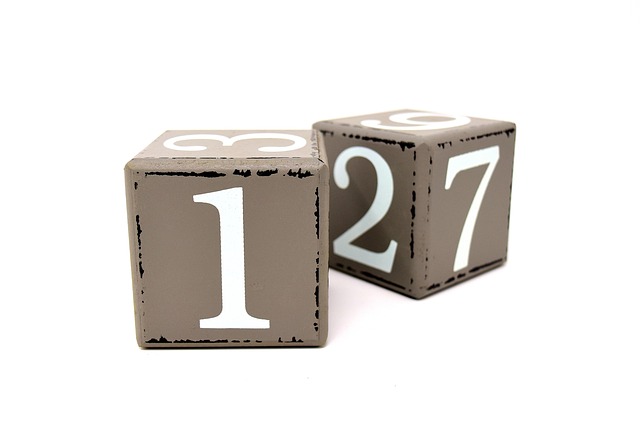Converting to the Hijri Calendar demands understanding its lunar nature, with 12 months of 29-30 days, causing yearly shifts. Errors arise from oversimplifying or misinterpreting moon-sun interplay, so educate oneself on historical context and month length variations. Local time zones must be considered for accurate conversions, as the Hijri doesn't account for solar days. Consistency in start dates is challenging due to diverse global adoption, but establishing practices can foster inclusive religious observances.
Converting to Hijri dates can be challenging due to common pitfalls. This article explores three significant mistakes often made during this transition: misunderstanding lunar and solar cycles, inaccurate conversion of month lengths, and ignoring local time zones. Additionally, it highlights the importance of consistency in start dates for accurate tracking. By understanding these errors, users can ensure more precise Hijri Calendar conversions, enhancing their understanding and appreciation of this ancient lunar-solar system.
- Misunderstanding Lunar and Solar Cycles
- Inaccurate Conversion of Month Lengths
- Ignoring Local Time Zones
- Lack of Consistency in Start Dates
Misunderstanding Lunar and Solar Cycles

Many individuals attempting to convert to the Hijri Calendar fall into the trap of confusing its lunar nature with solar cycles. While the Hijri Calendar is based on the moon’s orbit around Earth, it does not perfectly align with the sun’s path through the seasons. This fundamental misconception leads to common errors in date conversion. The moon completes approximately 12 lunar months in about 354 or 355 days, whereas a solar year consists of 365 or 366 (leap year) days. Therefore, each Hijri year is slightly shorter than a Gregorian year, resulting in a shift of roughly 10-11 days every year between the two calendars.
To achieve accurate conversions and grasp the practical application of the Hijri Calendar, it’s essential to understand lunar months in Islam. The artistic representations of Hijri months found at various cultural centers can serve as captivating visual aids for learning these cycles. By recognizing the unique interplay between the moon and sun, one can avoid oversimplifying or misinterpreting the calendar’s phases, ensuring a more accurate and meaningful understanding in their personal journey with the Hijri Calendar.
Inaccurate Conversion of Month Lengths

One of the most common mistakes when converting to Hijri dates is the inaccurate conversion of month lengths. The Hijri Calendar, based on lunar cycles, has months that vary in length from 29 to 30 days, unlike the more consistent 30-day months of the Gregorian calendar. This variance can lead to significant errors if not properly accounted for. Many individuals simply translate the number of days from their original calendar without considering the lunar nature of the Hijri system, resulting in incorrect dates and potentially altering the historical context of events recorded in hijri dating.
Understanding the nuances of the Hijri Calendar, including its historical roots and evolution, is crucial when converting dates. The hijri calendar in education often emphasizes these points to ensure accuracy. Moreover, studying the hijri calendar history and origin can provide valuable insights into how month lengths are determined, helping users avoid common pitfalls. Even if you’re not diving into the intricate details of the phases of the moon in the Hijri system, giving us a call at phases of the moon in hijri system, it’s essential to approach conversions with an awareness of these complexities to ensure historical records remain intact and reliable.
Ignoring Local Time Zones

Converting to Hijri dates is often a fascinating journey into an ancient calendar system, but it’s not without its pitfalls. One common mistake many make is ignoring local time zones. The Hijri Calendar operates on a lunar cycle, meaning each month begins with the new moon, regardless of the solar day. This can lead to discrepancies when comparing Hijri dates directly to civil or Gregorian dates, especially for those in different time zones. For instance, a Hijri date might fall on one calendar day in the Eastern Hemisphere but another in the Western Hemisphere due to varying local sunrises and sunsets.
To avoid this trap, always consider your local time zone when converting Hijri dates to civil or teaching the Hijri system to beginners. Don’t assume that a specific Hijri date equates to a single, universal date. Instead, consult reliable resources that take into account time zones for accurate conversions, and visit us at beginner’s guide to Hijri dates anytime for more insights on the advantages of using Hijri calendar. When converting from Hijri to civil, remember the potential shift due to these varying time zones for a precise understanding of the dates.
Lack of Consistency in Start Dates

One of the most common mistakes people make when converting to Hijri dates is lacking consistency in start dates. The Hijri Calendar, which is based on the lunar cycle, means that dates can vary from year to year compared to the Gregorian calendar. This inconsistency often arises because many individuals begin counting the months from different starting points, leading to confusion. For instance, some might start the new year with the first visible crescent of a moon, while others may use specific historical events or religious festivals as their beginning marks.
This issue is further complicated by the global adoption of Hijri systems in diverse communities. With people adopting and adapting the calendar worldwide, there’s no uniform consensus on when to commence each year. For those looking for fun ways to learn Hijri dates, this diversity can be both a challenge and an opportunity. Understanding these variations and establishing consistent practices, especially while converting from Gregorian to Hijri date, can greatly aid in ensuring everyone is on the same page, making religious observances and celebrations more inclusive and enjoyable for all. Find us at converting gregorian to hijri date to learn more about overcoming these common pitfalls.
Converting to Hijri dates requires careful consideration of lunar and solar cycles, accurate month length conversions, awareness of local time zones, and consistent start dates. Common mistakes like misunderstanding these factors can lead to errors. By being mindful of these issues, individuals can ensure more precise and meaningful calculations when adopting the Hijri Calendar.
